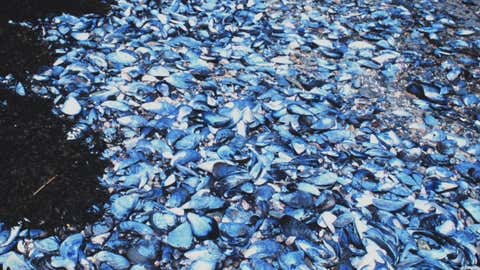
Representational image
(William Folsom/NOAA)
Like a moth to a flame, India has constantly attracted Central Asian invaders for centuries, leaving historians wondering what made the mainland so alluring. Fortunately, a recent study delving into the secrets of tiny shells found in the West Indian state of Gujarat offers a new perspective: our flourishing Indian climate may have played a key role in driving these invasions.
The past two millennia witnessed a string of seven invasions from Central Asia, all occurring during periods when India enjoyed robust monsoons and flourished with agricultural abundance. During this time, Central Asia grappled with prolonged droughts, rendering it a harsh and unforgiving land. This stark contrast may have been the catalyst for these invasions, the study suggests.
A team of researchers from IIT Kharagpur and the Archaeological Survey of India meticulously studied Vadnagar, a historically rich site in Gujarat that recently gained fame for being Prime Minister Narendra Modi’s hometown. Nestled within ancient fortifications, this town is brimming with evidence of human activity spanning back to a whopping 2,800 years ago. Much of this even predates the advent of major religious movements like Jainism and Buddhism in India as well.
By examining oxygen isotopes in freshwater molluscs and shells from the region, the researchers were able to reconstruct the environmental conditions of the past, revealing a fascinating link between climate and historical events.
They found that stronger monsoons and bolstered agriculture often coincided with periods of enhanced cultural exchange, leading to Vadnagar accumulating important cultural artefacts with Greco-Bactrian, Saka, and Indo-Sassanian influences.
These periods mirrored the invasions that occurred during these monsoonal bounty periods. Further, lead author Anindya Sarkar emphasised that no major invasion happened when India was facing famine and droughts, further strengthening the connection between climate and conquest.
Being a historical centre of much hustle-bustle, India continues to be a treasure trove of such ancient interactions. While we might place a great deal of importance in unearthing artefacts to fill gaps in our timeline, this research is a compelling case to think outside the box and fully understand the rich tapestry of Indian history.
The findings of this research have been published in the Quaternary Science Reviews and can be accessed here.
**
For weather, science, space, and COVID-19 updates on the go, download The Weather Channel App (on Android and iOS store). It’s free!






